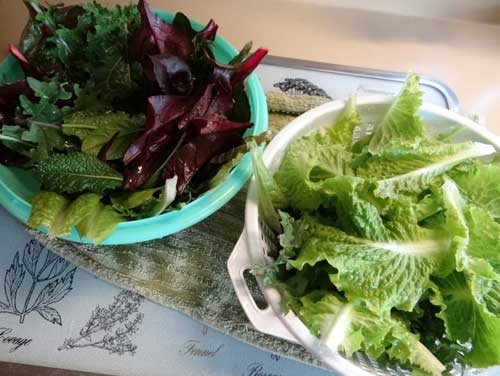This post contains affiliate links, which means I may earn some money if you click on one. Don't worry, there is no additional cost to you. Thank you for supporting my blog.
Folic acid is THE vitamin pregnant women are supposed to take. It is supposedly the most important vitamin for pregnant women. It is supposed to prevent Spina bifida and other midline defects.
But what if that is not true? Sounds crazy right? But if you read on I will explain why it is not true for many of us.
The vitamin that is needed is actually FOLATE. Many people think they will get enough folate by taking folic acid, but that is not always true. There are complex biochemical cycles that occur in our bodies that convert folic acid into folate. If there is a glitch in this system, the capacity of the body to make folate is reduced. When I first heard about this, I thought it must be pretty rare. But I have been reading up on this for a few months now and it seems to be fairly common, (40-50% of the population has some form of this mutation). So taking a prenatal vitamin with folic acid might not be beneficial.
It gets worse though, consuming folic acid is causing a folate deficiency in more ways than one. If a woman cannot convert the folic acid into folate, and she takes folic acid, the folic acid seems to block receptors in this cycle, (called the methylation cycle). I say “seems” because I do not fully understand the biochemistry behind this yet, it is something I have read about. But if true, this is devastating. Why? In this case, even if a pregnant woman is consuming folate rich foods while taking a folic acid vitamin, she might be folate deficient because her folate receptors are blocked by the UMFC, (unmetabolized folic acid).
I keep referring to pregnant women, but they are not the only ones affected. Folic acid is not just present in prenatal vitamins, it is actually added to fortify many processed foods. The presence of folic acid in prenatal vitamins might actually be harming unborn babies, and that is not O.K.
(I am not a medical doctor, and I am not writing this post with the intention of giving medical advice. I simply want to warn pregnant women, and tell them to do their own research. Most people do not know that folic acid could be a problem).
The issue is actually a complicated one. There are different steps in the biochemical process called methylation, and some people may actually need the methylated version of folate, (depending on how well their methylation cycle is functioning). This is an over-simplification, but the emerging branch of medicine called “nutrigenomics” is not something I can explain in a short blog post. I have been told that taking folate might not necessarily help some people, that they may need a methylated version of folate. (It is not a 2 step process, folic acid goes through a few steps before becoming methylated folate).
To complicate matters even more, taking methylated folate might trigger detoxification, which is obviously not ideal during pregnancy. So please consult with your doctor about this. It is preferable to take methylated folate at least 6 months before getting pregnant, to get the body ready.
There is a way to determine how your body can process folic acid and folate. It requires genetic testing, and one of the mutations/genetic variations to look for is the MTHFR SNP. (No, it is not a curse word, it is an acronym for Methylenetetrahydrofolate reductase) .
There are ways to determine if your children “might” have an issue with folic acid. These physical attributes are not definitive, but they are “hints” that methylation MAY be an issue for them.
– Lip ties and tongue ties
– The “sugarbug vein”
– Stork Bites
– Sacral dimple
I cannot say for sure that a child who has any of these physical attributes have the MTHFR gene. All I know is the parents who have children with methylation issues have reported these “midline defects”. It is an interesting correlation.
This is the tragic part, folic acid is supposed to prevent midline defects. However, it is folate that truly prevents it, and many pregnant women are not getting the folate they need.
It is so important for a pregnant women to eat foods that are nutritionally dense. However, some of the foods high in folate, like liver, also contain high levels of vitamin A. There are mixed opinions about high levels of vitamin A during pregnancy, but I have read that the natural vitamin A in liver is actually beneficial, a sacred nutrient. (source). Leafy greens contain folate, and it seems to be universally accepted that eating leafy greens is healthy. Lentils, goat milk kefir, and avocados also contain folate, so there are other options for consuming folate.
(An interesting observation I made, I got pregnant with Lily after drinking goat milk kefir every day for a month. It could be a coincidence, but then again, maybe not).
At this time I cannot figure out any reason to consume folic acid. The only scenario where it seems to be beneficial is if a person has a methylation cycle that is operating at optimal capacity. But how many people have optimal methylation? Most people have no idea how their methylation cycle is functioning. (I don’t, I have not done the genetic testing yet). If 50% of the population has methylation problems, then many of us are affected.
I can’t wrap my head around this. Why is folic acid recommended for pregnant women? Is it actually causing the problems it is supposed to prevent? I hope not, but at this point I have read enough about folic acid to make me concerned. I hope I am not the only one.
I plan on writing more about this topic in the future, but it is a complicated issue which will require a lot more research.
Have you been tested for the MTHFR SNP? Were you warned about folic acid when pregnant?
For more information on MTHFR ….
MTHFR – A Beginner’s Guide
MTHFR Support
MTHFR net
Dr Amy Yasko – Methylation Cycle





No Comments